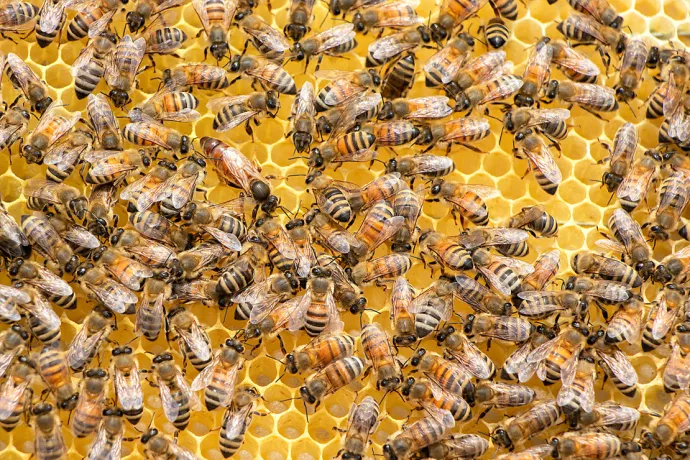
Hype about murder hornets ‘overblown,’ says UTM biologist
Fear that so-called murder hornets are invading North America after the large, deadly predators were spotted in the West Coast are “overblown,” says U of T Mississauga entomologist Rosalind Murray.
Murray, a postdoctoral fellow, says a few of the insects have been found in western North America since September 2019. A nest was destroyed in British Columbia last year while this year there are reports of the invasive species in Washington state, prompting concerns that the giant insect could overrun local bee populations.
Also known as the Asian giant hornet, which experts have known about for a long time, these insects are the largest hornet in the world, with queens growing to an impressive five centimetres and the workers averaging four centimetres in length. As the name implies, they are native to Asia.
The nickname ‘murder hornet’ is misleading. Murray says they are murder to bees, but for the most part the hornets are not aggressive to people unless they feel threatened.
“They pack a punch when they do sting,” she says. “But ‘murder hornet’ takes it to a new level.”

Murray explains the hornets, which are “so big and impressive,” are a social insect that build a huge nest with lots of young to feed. They are meat eaters that mostly consume insect flesh, and because they are so large and numerous, they need a large source of prey, she says. Bee nests are a great way for the giant hornets to feed their young.
When the hornets locate a bee nest, they basically call in the cavalry by releasing a pheromone to recruit other hornets.
“They have a war and kill all the bees and feed the bee larvae to the hornet larvae,” Murray says. “They take the bees’ babies.”
In Japan, honeybees have evolved an “intricate defense mechanism,” she continues, explaining the bees detect the pheromone released by the hornets and call on their own nest mates. She says the bees then form a ball around the hornet and suffocate it by producing carbon dioxide and heat.
“It’s the coolest thing,” Murray says.
The North American and European honeybees, however, have not had time to develop a defence because this is a new predator for them.
Murray says she thinks the hornets are getting a “bad rap,” and have “exploded in popularity because of the moniker ‘murder hornet.’” The hornets don’t target humans, she says, and while it’s gruesome to see hundreds of decapitated bees and it’s always disturbing when something is introduced accidentally, this isn’t a large-scale problem.
Native bees are dealing with a lot of other threats, she says, pointing to climate change and destroyed habitats. It is unlikely these hornets will eat many wild bees, which generally live more solitary lives and don’t build larger nests like honeybees, which were imported from Europe.
While the hornets probably don’t pose a significant threat, Murray says if she were a beekeeper on the West Coast, she would install a physical barrier to help protect the bees. Beekeepers in Asia use a barrier that has an opening big enough for a bee to get through but too small for hornets to enter, she explains.
Meanwhile, those in Ontario shouldn’t be concerned. “We can rest easy, at least this season,” Murray says.
